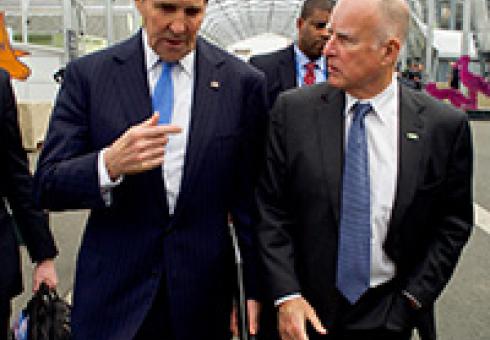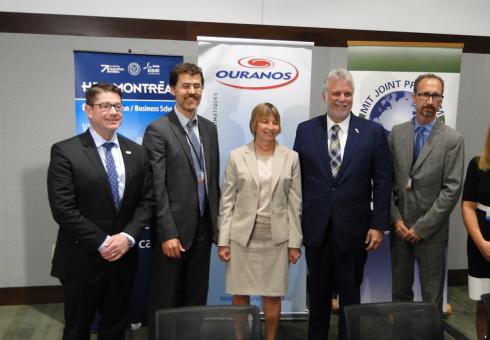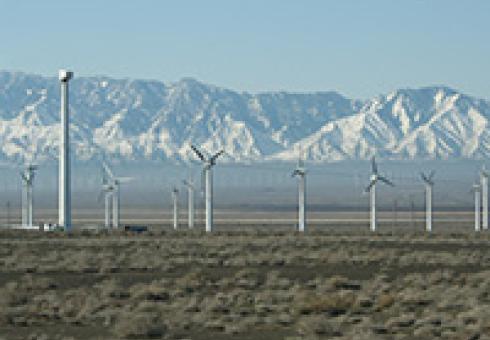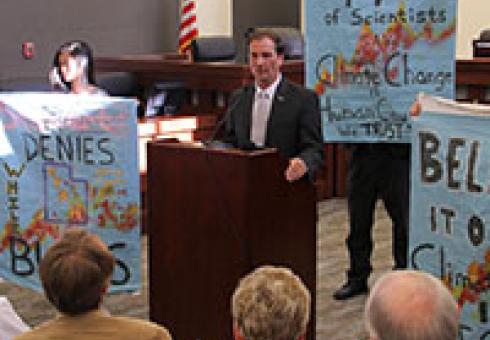News + Media
California will extend its landmark climate change legislation to 2030, solidifying the state’s role as a leader in the effort to curb emissions.
John Sterman, a professor and climate policy expert at the MIT Sloan School of Management, said California’s move sent an unambiguous message that major political forces support such action. “It says, We’re committed to this task,” he said. “We’re not going back.”
In a practical sense, Dr. Sterman said, the decision gives companies and innovators clear direction about how to make investments. That could lead companies to drive down their prices in alternative energies, he said.
Still, Dr. Sterman said, even California’s ambitious goals fall short of what will ultimately be needed to head off severe effects of climate change. “As welcome as California’s action is, it’s still not aggressive enough,” he said.
. . .
Photo: Secretary of State John Kerry with California Gov. Jerry Brown at the COP21 Climate Change Summit in Paris (Source: U.S. Department of State)
Kerry Emanuel of MIT suggests a new warning system and policies that account for increases in flooding, among other reforms.
“Most damage is done by Category 3 or higher hurricanes, and recent modeling by Emanuel and others strongly suggests that higher-category storms in the North Atlantic and elsewhere will become more frequent as the climate warms further. Factor in sea-level rise generating greater storm surges, and the scenarios do not look good.”
Photo: Hurricane Jeanne, 2004 (Source: kakela)
In late 2014, China’s climate pledge was a bold and unprecedented step, but an emissions peak sooner than 2030 looks well within reach. Now, the question is whether or not—and how—China can achieve further progress on climate change while advancing its own development goals.
In radio clip, Ed Butler explores these issues with MIT Professor of Civil and Environmental Engineering Elfatih Eltahir, a climatologist in the MIT Center for Global Change Science; and journalist and author Francesca de Chatel.
Photo: Arabian desert (Source: Alim Mohammed)
A new study indicates that solving the problem of wind and solar’s intermittency has thus far required the use of more fossil fuels, including the installation of several “fast-ramping” natural gas plants. Center for Energy and Environment Policy Research (CEEPR) Director Christopher Knittel comments.
Photo: Big Bend Power Station and Manatee Viewing Center Parking Lot - Solar vs Coal & Natural Gas. Source: Walter)
Climate deniers often cite uncertainty in climate models and other scientific evidence. Researchers challenge this argument in a new essay published in Science, suggesting climate scientists should place more emphasis on the risks of inaction. Joint Program Co-Director John Reilly comments.









